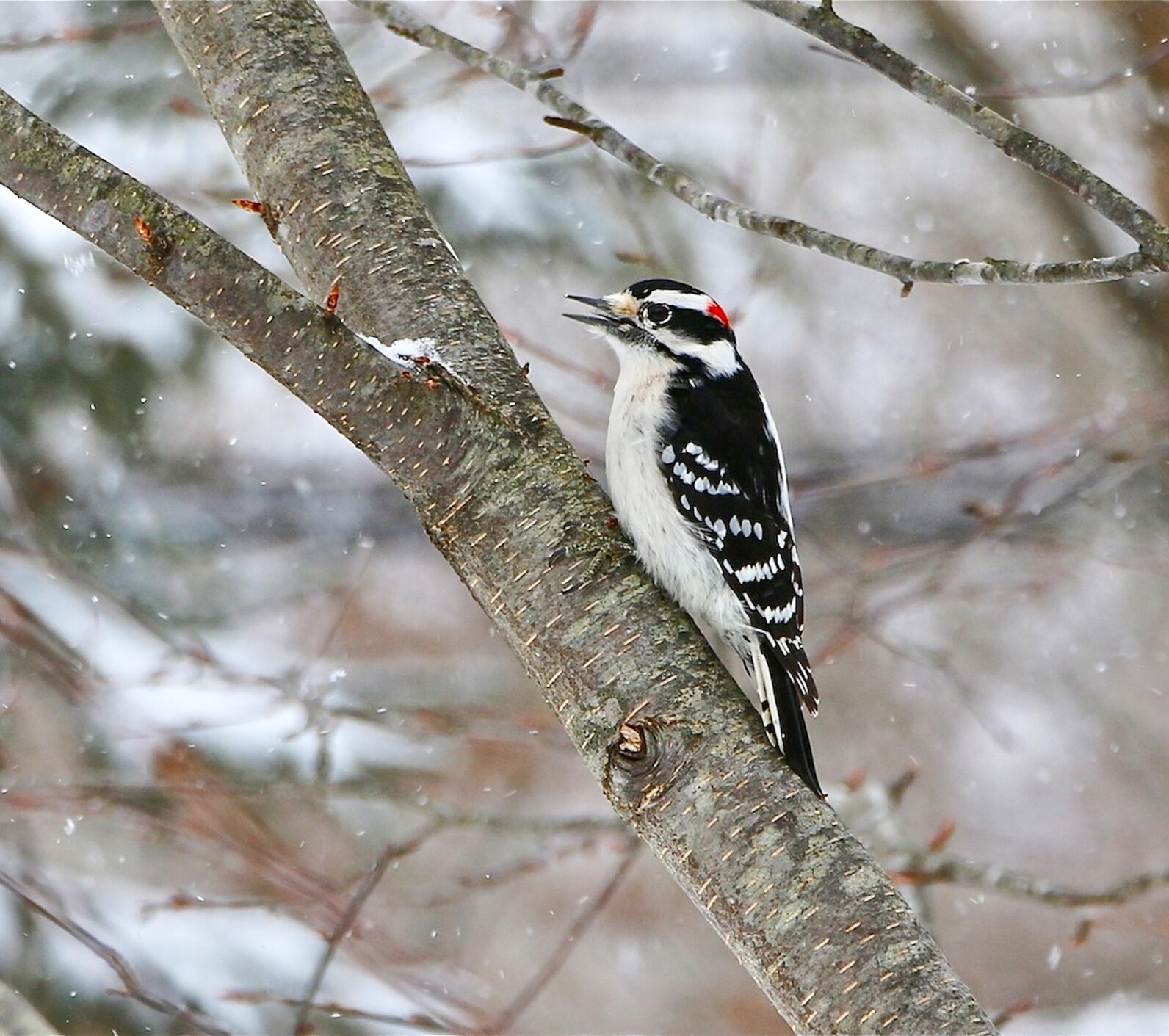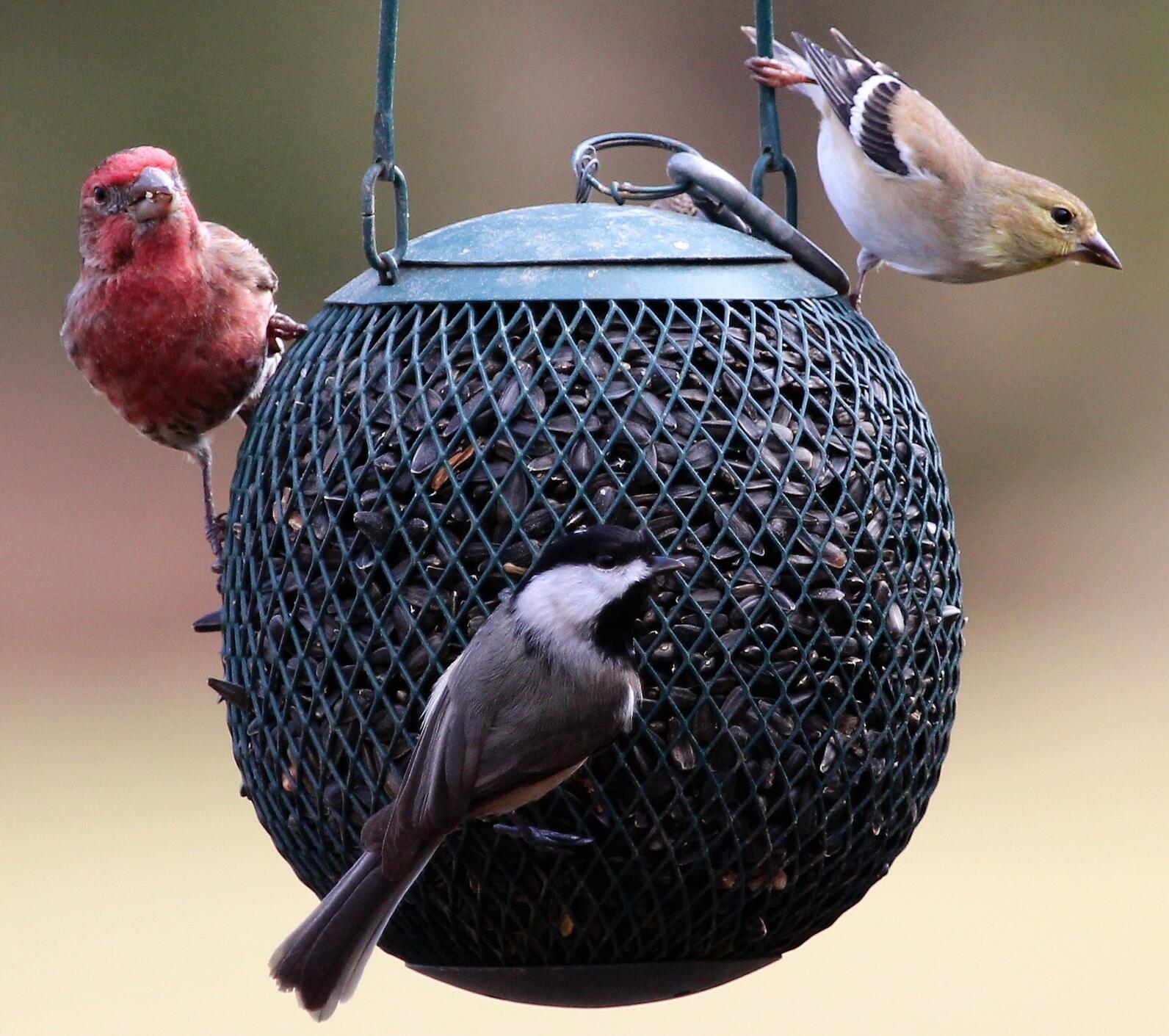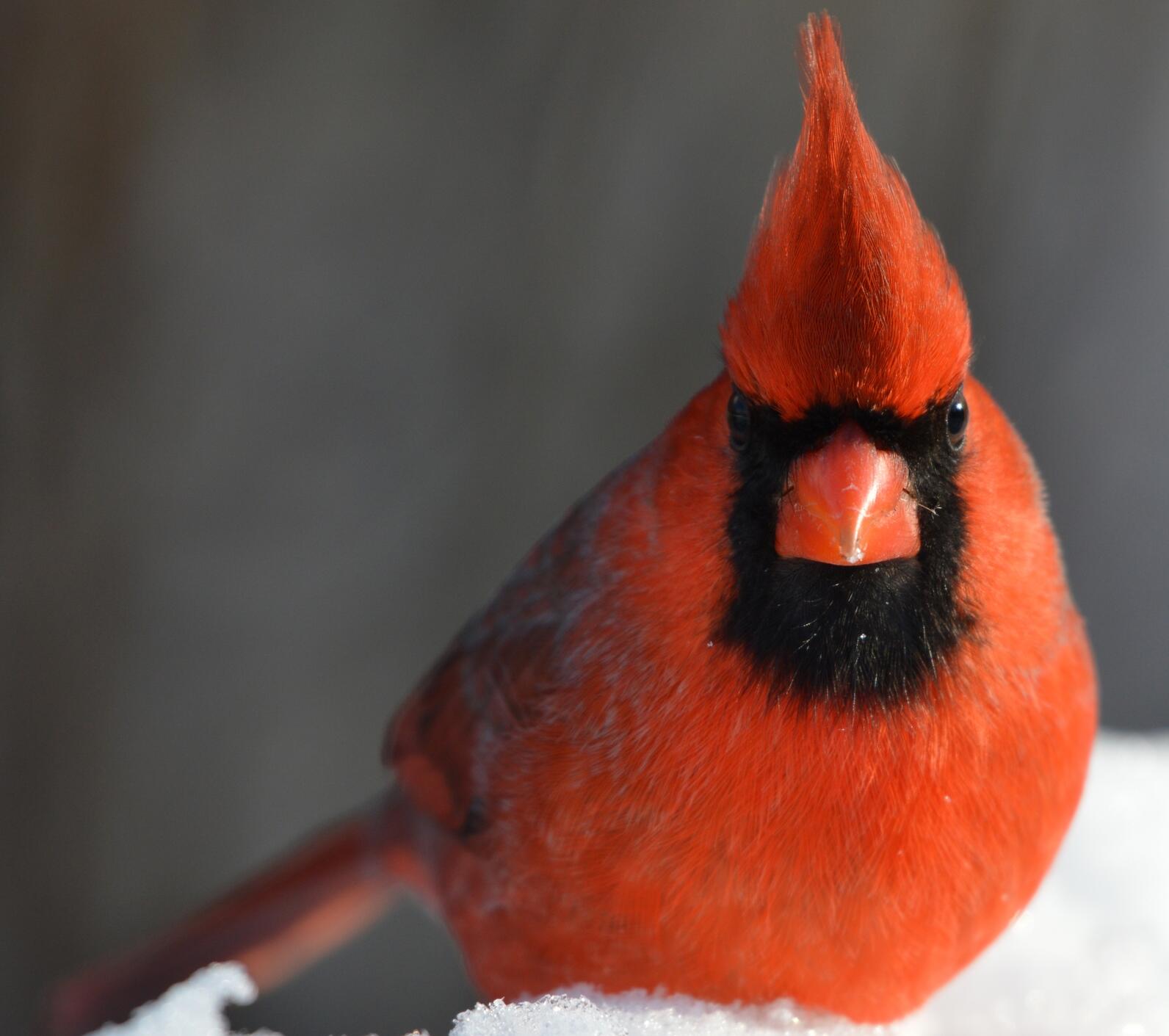Winter birds have adjusted to eating during the frigid winter temperatures of the Great Lakes region. Some species store food from bird feeders to eat later in winter, while others expand their food sources and change their diet.
Despite these incredible adaptations, winter can still be a stressful time for our favorite winter birds. We can help support winter birds by providing an assortment of native plants as well as bird feeders and seed when natural food sources may be scarce or under cover of snow and ice.
Learn how to safely attract some of our most common winter birds to your space:

Bird feeding tips: Attract Downy Woodpeckers with suet feeders, which can also attract other woodpeckers, titmice, nuthatches, chickadees and the occasional wren, creeper and warbler!
Native plant tips: Maintain a dead or dying tree, where woodpeckers can build a cavity for roosting or nesting. Plant native trees such as American Basswood, American Beech, American Elm, and Oak, as well as seed and fruit producing plants including Freshwater Cord Grass, Cock-Spur Hawthorn, or Northern Spicebush.
Black-capped Chickadee, White-breasted Nuthatch, Tufted Titmouse, American Goldfinch

Bird Feeding Tips: These small birds can be attracted using tube feeders with black oil sunflower seeds, mixed seed, safflower seed, or peanuts. This may also attract Pine Siskins, Purple and House Finches.
Native Plant Tips: Plant native trees, shrubs and grasses that produce seeds and nuts each fall and winter, such as American Hazelnut, American Witch-Hazel, Common Buttonbush, Smooth Arrow-Wood, White Sagebrush or Yellow Indian Grass.

Bird feeding tips: Bring a pop of color to your backyard by attracting Northern Cardinals and Blue Jays with hopper feeders with safflower and sunflower seeds or cracked corn. This would also attract all the species that visit tube feeders.
Native plant tips: Plant native trees and shrubs that provide fruits and nuts each fall and winter, such as Allegheny Service-Berry, American Hazelnut, Common Winterberry, and American Witch-Hazel.
Visit Audubon's Native Plants for Birds Database to learn more about bird-friendly native plants in your zip code.
Tips on how to keep your backyard birds safe
Check Your State Guidelines on the Highly Pathogenic Avian Influenza
Highly Pathogenic Avian Influenza (HPAI) is still being found in wild bird populations. Since January 1, 2022 49 states have had positive HPAI cases in commercial flocks, backyard flocks, wild birds or wild mammals according to the USDA. While most cases of HPAI have been found in waterfowl and scavenging birds (eagles, hawks, owls), other wild birds known to be capable of harboring influenza viruses include shorebirds, gulls, quail, and pheasants. The virus is shed in fecal droppings, saliva, and nasal discharges. Visit your local Department of Natural Resources website to learn more about HPAI in your state, and for local safety recommendations.
Provide water to birds during the winter, especially when there is no snow. Use a sturdy birdbath that can withstand freezing and place it in a sunny area so it remains visible to birds and stands a better chance at remaining liquid. Heated birdbaths can also be purchased at stores.
Remember to keep your bird feeders and birdbaths fresh and clean. Freshen the water every other day, if possible. Clean your feeders once every 1-2 weeks in a solution that is 9 parts water and 1 part bleach, scrubbing away any debris. Dry the feeder before refilling. Clean bird baths with a scrub-brush in a solution that is 9 parts water and 1 part vinegar.
Don’t place seed directly on the ground or use platform feeders, which tend to congregate larger numbers of birds, attract deer and other unwanted guests. Mess-free birdseed options are available to purchase at stores, which can help keep the ground clean.
Fence in your feeders, if possible, to prevent deer from accessing them. This is particularly important if you live in a state that is combatting Chronic Wasting Disease (CWD). Visit your local DNR website to learn more about how to help prevent the spread of CWD in deer.
Provide shelter to birds from winter storms in the form of brush piles or bird nest boxes, which can double as winter roosting boxes.
About MI Birds
MI Birds is a public outreach and education program presented by Audubon Great Lakes and the Michigan Department of Natural Resources that works to build and bring together wildlife enthusiasts across the state to engage with and conserve Michigan’s public lands for the benefit of birds and people.










